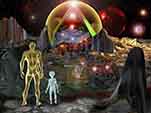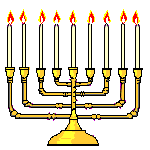This is one of my favorite books and I would like to share a couple of paragraphs with you. As we know Jesus is not mentioned in the bible during the years of twelve to thirty. This book results from the search for the lost years of Jesus by Janet Bock and her husband.
Her search for the lost years was prompted by the "Aquarian Gospel of Jesus the Christ." After this catalyst, Mrs. Bock began to look for other relevant material. The search lead to India and a book by a Russian called Nicolas Notovitch.
"Although his book was not readily available, we located a copy of the original 1890 edition. In it Novotovitch tells a fascinating story of his travels which culminated in an accident (he was thrown from a donkey on a steep mountain path) that forced him to recover at a Buddhist gompa, or monastery, called Himis in Leh, Ledak, then the western region of Tibet and now the northern-most part of India.
In his travels Notovitch had heard enigmatic tales of a Saint from the west who had been revered by the Hindus and the Buddhists. While convalescing he was shown a copy of a manuscript, a collection of verses, describing the life of this saint known as Issa, the Buddhist equivalent of the name of Jesus. In the book "Caesar and Christ" Will Durant explains, "His parents gave him the quite common name of Yeshua'a (our Joshua), meaning 'the help of Yahveh': the Greeks made this into Iesous, the Romans into Jesus. The story of the bible says about Jesus, but included his life from age 12 to 30 as well.
Notovitch was told that the original manuscript was located in the great monastery on Mt. Marbour, near Lhasa, the capital of Tibet, with other copies at several of the country's major monasteries.
Originally written in India and later brought to Tibet, the manuscript had been set down in the ancient Pali language shortly after merchant caravans brought news of Jesus' crucifixion. The copy shown Novovich by the monks was in Tibetan and began, "The earth trembled and the heavens wept because of the great crime committed in the land of Israel. For there was tortured and murdered the great and just Issa, in whom was manifest the soul of the universe."
Notovitch's guide translated the verses which were written down and later reproduced in his book.
Edgar Cayce, an ardent, almost fanatical Baptist, was shocked upon first awakening from a trance to hear he had spoken of Jesus traveling and studying in foreign lands to the east. He later became convinced it was true.
In writing about the legend, Notovitch said, "The two manuscripts, from which the lama of the monastery at Himis read to me all that had a bearing upon Jesus, are compilations from divers copies writen in the Tibetan language, translations of scrolls belong to the library of Lhasa and broght, about two hundred years after Christ, from India, Nepal, and Magadha, to a convent on Mount Marbour, near the city of Lhasa.
"1. The earth trembled and the heavens wept, because of the great crime committed in the land of Israel.
2. For there was tortured and murdered the great and just Issa, in whom was manifest the soul of the Universe.
3. Which had incarnated in a simple mortal to benefit men and destroy the evil spirit in them:
4. To lead back to peace, love and happiness, man degraded by his sins, and recall him to the one and indivisible Creator whose mercy is infinite.
5. The merchants coming from Israel have given the following account of what has occurred>
1. The moment had come for the compassionate Judge to re-incarnate in human form:
_____________________________________________________________
Some of this I am going to skip, it is just too long.
9. People cam from all parts to hear him, and marvelled at the discourses which came from his infantile mouth; and all Israel agreed that the Spirit of the Eternal dwelt in this child.
10. When Issa was thirteen years old, the age at which an israelite is expected to marry,
11. The modest houseof his industrious parents became a meeting-place of the rich and illustrious, who were anxious to have as a son-in-law the young Issa, who was already celebrated for the edifying discourses he made in the name of the ALL-Powerful.
12. Then Issa secretly absented himself from his father's house; left Jerusalem, and, in a train of merchants, journeyed towward the Sindh.
13. With the object of perfecting himself in the knowledge of the word of God and the study of the laws of the great Buddhas.
1. In his fourteenth year, young Issa, the Blessed One, came this side of the Sindh and settled among the Aryas, in the country beloved by God.
2. Fame spread the name of the marvellous youth along the Sindh, and when he came through the country of the five streams and Radjipoutan, the devotees of the god Djaine asked him to stay among them.
3. But he left the deluded worshippers of Djaine and went to Djagguernat, in the country of Orsis, where repose the mortal remains of Vyass-Krishna, and where the white priests of Brahma welcomed him joyfully.
4. They taught him to read and understand the Vedas, to cure physical ills by means of prayers, to teach and to expound the sacred Scriptures, to drive out evil desires from man and make him again in the likeness of God.
____________________________________________________________
Issa came into conflict with the Kshatriyas
2. But Issa, warned by the Sudras of his danger, left by night Djagguernat, gained the mountain, and settled in the country of the Gautimides, where the great Buddha Sakya-Muni came to the world, among a people who worshipped the only and sublime Brahma.
3. When the just Issa had acquired the Pali language, he applied himself to the study of the sacred scrolls of the Sutras.
4. After six years of study, Issa whom the Buddha had elected to spread his holy word, could perfectly expound the sacred scrolls.
5. He then left Napaul and the Himalaya mountains, descended into the valley of Radjipoutan and directed his steps toward the West, everywhere preaching to the people the supreme perfection attainable by man;
6. He who has recovered his primitive purity, said Issa, "shall die with his transgressions forgiven and have the right to contemplate the majesty of God.
XI
Issa-whom the Creator had selected to recall to the worship of the true God, men sunk in sin-was twenty-nine years old when he arrived in the land of Israel.
Swami Prajnananda:
After 25 years in America he returned to India in 1922 . He read Notovitch's book and became very interested in the subject. He wanted to know if the scrolls existed and if Notovitch could have seen them. He went to Tibet in 1922 and he found the scrolls and he translated all the writings, all the life incidents of the Christ. He narrated those incidents in his book "Kahmiri O Tibetti."
Swami Prajnananda:
Yes. I am very interested in Christ. My guru used to say He, Christ, was an Indian yogi. he wrote a book called "Was Christ a Yogi." In that book he told that Christ was more than a yogi, that he practiced yoga and also that He realized God as not only Christian, but Hindu, Jain, Buddhist and the God of all faiths.
"So, being a divine descent, is is just possible that he was born with thses powers. They were to Him natural and spontaneous, the only thing is He withheld manifesting them until His time had come, until the correct hour had struck, then only He manifested these powers. Otherwise he wanted to be like any ordinary person, to fulfill the laws of the normal human plane."
"Possibly the crucifixion and resurrection were necessary to insure the continuation of the message. There have been many Christian martyrs and great prophets, but none with the power of Jesus had to stir mankind for 2,000 years."
"In the legend of the mature Issa returned to Jerusalem to speak eloquently about the relationship between men and women.
Hearken to what I say to you: Respect woman; for in her we see the mother of the universe, and all the truth of divine creation is to come through her.
She is the fount of everything good and beautiful, as she is also the germ of life and death. Upon her man depends in all his existence, for she is his moral and natural support in his labors.
In pain and suffering she brings you forth; in the sweat of her brow she watches over your growth, and until her death you cause her greatest anxieties. Bless and adore her, for she is your only friend and support on earth.
Respect her; defend her. In so doing you will gain for yourself her love; you will find favor before God, and for her sake many sins will be remitted to you.
Love your wives and respect them, for they will be the mothers of tommorrow and later the grandmothers of the whole natin.
Be submissive to the wife, her love enobles man, softens his hardened heart, tames the wild beast in him and changes it to a lamb.
Wife and mother are the priceless treasures which God has given to you. They are the most beautiful ornaments of the universe, and from them will be born all who will inhabit the world.
Even as the Lord of Hosts separated the light from the darkness and the dry land from the waters, so does woman possess the divine gift of calling forth out of man's evil nature all the good that is in him.
Therefore I say unto you, after God, to woman must belong your best thoughts, for she is the divine temple where you will most easily obtain perfect happiness.
Draw from this temple your moral force. There you will forget your sorrows and your failures, and recover the love necessary to aid your fellow-man.
Suffer her not to be humiliated, for by humiliating her you humiliate yourselves, and lose the sentiment of love, without which nothing can exist here on earth.
Protect your wife, that she may protect you-you and all your household. All that you do for your mothers, your wives, for a widow, or for any other woman in distress, you will do for your God.
GOPI KRISHNA
"So, I can't say whether it was from the Indian sources that he got this, or if it was his own inner intuition, but in any case there is an esoteric link between Jesus and Indian principles."
______________________________________________________________
"Now we are about to take a detour from the legend. During the course of the research we had been surprised to discover the apostle Thomas had traveled to India after the death of his master, had preacheded for fifteen years adn then been martyred there. Out next stop was the city of Madras on the eastern coast of south India, the location of Thomas' grave and the apostolic cathedral dedicated to his memory.
When the Apostles had been for a time in Jerusalem, they divided the countries among them in order that each one might preach in the region which fell to him; and India fell to the lot of Thomas.
Another passage gives Thomas' reaction to the news of his mission, "I am a Hebrew; how can I teach the Indians?"
Later, in the same narrative, he says stubbornly, "Whithersoever Thou wilt, O lord, send me; only to India I will not go..."
In spite of his stubborness and doubt, such familiar human qualities, it appears Thomas did go to India. The Roman Catholic Chruch now regards the Cathedral of St. Thomas as Mylapore as a Basilica because it stands over the tomb of the Apostle."
Thomas is referred to as Dydimos Thomas the Twin in the St. James Bible.
According to the apocryphal Acts of Thomas, he entered India as a carpenter, preached the Gospel, performed many miracles and died a martyr's death.
After living and preaching in the communities on the West Coast, Thomas traveled East, reaching the Mylapore coast on the Bay of Bengal. This area was now interesting to us because of the three places sacred to the memory of the Apostle, Little Mount, wher he is said to have sought refuge from pursuers, St. Thomas Mount, where he was captured and killed as he knelt in prayer, and the Cathedral of St. Thomas, which was bult over his tomb.
It is not known how long Thomas remained here in prayer, but the traditional story says that as he knelt before a stone cross he had carved by hand from a boulder, an assasin sent by the ministers of the king crept up from behind and pierced him with a lance. Thomas fell on the stone cross, embracing it, his blood staining the stone and the earth around it.
The stone was rediscovered by the Portuguese on March 22, 1547, during excavations for the foundation of the present chruch. One Francis Govuea described the tone as "well carved... and a bird touching with its beak the top of the cross. He went on to say, "There was found under the stone much earth bedewed with blood as if it were freshly shed, a good portion of it being attached to the stone itself."
There are reports of miraculous "bleeding" of this stone from 1551 to 1704.
After finding him dead, the followers of St. Thomas carried his body to the place six miles away called Beth Thuma, now known as San Thome, de Meliapor, to the church Thomas had built, and buried him there. The place of his burial is now the site of the Cathedral of Saint Thomas, Mylapore."
_____________________________________________________________
I had another couple of pages here of my own analysis, but deleted it. I don't want to detract from the book. I will save it for another time.






































